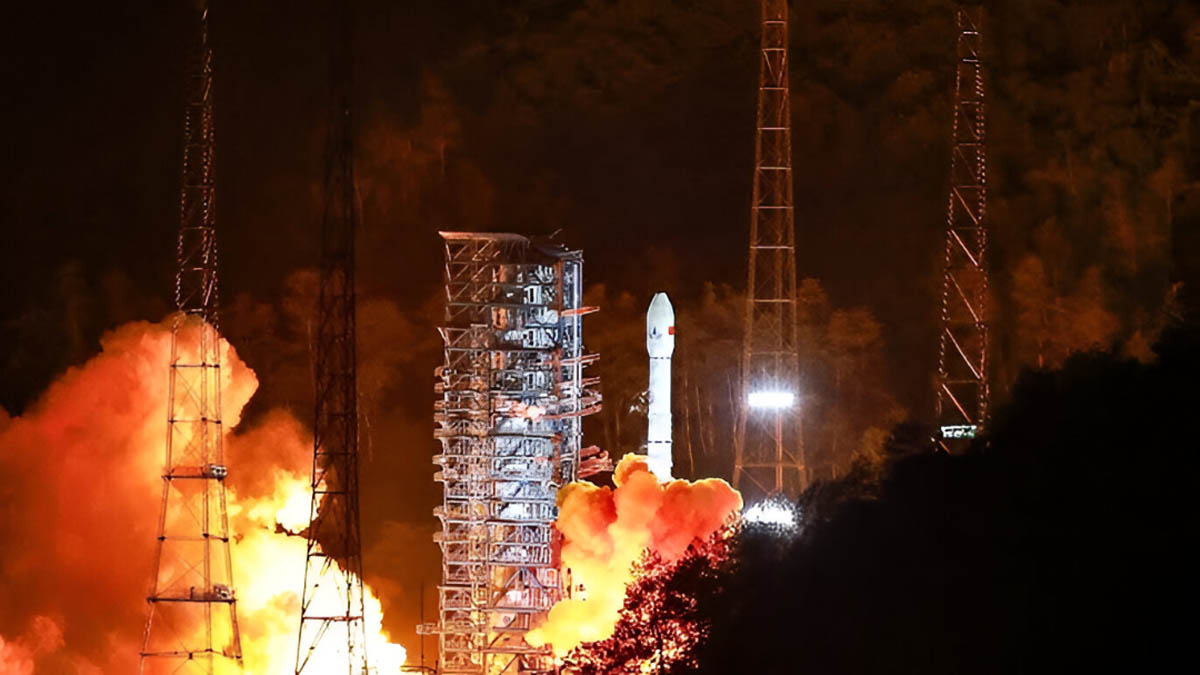Now Reading: China Embarks on Ambitious Tianwen-2 Mission to Unlock Asteroid Secrets
-
01
China Embarks on Ambitious Tianwen-2 Mission to Unlock Asteroid Secrets
China Embarks on Ambitious Tianwen-2 Mission to Unlock Asteroid Secrets

In a significant leap forward for its burgeoning space program, China successfully launched the Tianwen-2 mission early Thursday morning, embarking on an ambitious journey to retrieve at least 100 grams of pristine soil and rock samples from a near-Earth asteroid. This landmark mission, lifted off aboard a Long March 3B rocket from the Xichang Satellite Launch Center, aims to make China only the third nation, after Japan and the United States, to successfully return asteroid samples to Earth.
The primary target of Tianwen-2 is 469219 Kamoʻoalewa, a fascinating quasi-satellite of Earth. Discovered in 2016, Kamoʻoalewa follows a unique orbital path around the Sun that keeps it relatively close to our planet, creating the illusion of orbiting Earth. Scientists are particularly intrigued by this asteroid as its light spectrum closely resembles that of lunar rocks, leading some to hypothesize it could be a fragment ejected from the Moon in the distant past. If proven, the samples brought back by Tianwen-2 could offer unprecedented insights into the early history of the Earth-Moon system and the broader evolution of our solar system.
The Tianwen-2 spacecraft is expected to reach Kamoʻoalewa in July 2026. Once there, it will employ a combination of cutting-edge sampling techniques, including “touch-and-go” and a novel “anchor-and-attach” method utilizing robotic arms, to collect the desired material. The mission team faces the complex challenge of operating in a low-gravity environment where the asteroid’s precise shape, rotation, and surface characteristics are still largely unknown. Precision navigation and autonomous control will be critical to the success of the sampling operation.
After collecting the samples, Tianwen-2 will begin its journey back to Earth, aiming for a landing in November 2027. A return capsule containing the precious asteroid material will separate from the main probe and descend to Earth, while the mothership will continue its extended mission.
Beyond the asteroid sample return, the Tianwen-2 mission is designed for a remarkable secondary objective. Following the sample delivery, the main spacecraft will utilize Earth’s gravity for a slingshot maneuver, propelling itself towards its second target: comet 311P/PANSTARRS. This mysterious object, located in the main asteroid belt, exhibits characteristics of both an asteroid and a comet, making it a unique subject for study. The spacecraft is anticipated to arrive at 311P around 2035, where it will conduct extensive observations using its suite of 11 scientific instruments, including cameras, spectrometers, and radar. This dual-target mission will be the first of its kind, offering invaluable data on the diversity of small celestial bodies and the complex processes that have shaped our solar system.
The Tianwen-2 mission is a testament to China’s rapidly advancing capabilities in deep space exploration. Following the successful Tianwen-1 Mars mission and preceding planned future endeavors like Tianwen-3 (a Mars sample return mission) and Tianwen-4 (an exploration of the Jupiter system), this mission underscores China’s long-term vision to become a leading force in space science and technology. The scientific community worldwide is eagerly awaiting the results, as the secrets held within these asteroid samples could revolutionize our understanding of planetary origins, potentially even shedding light on the formation of water and other vital compounds on Earth.







